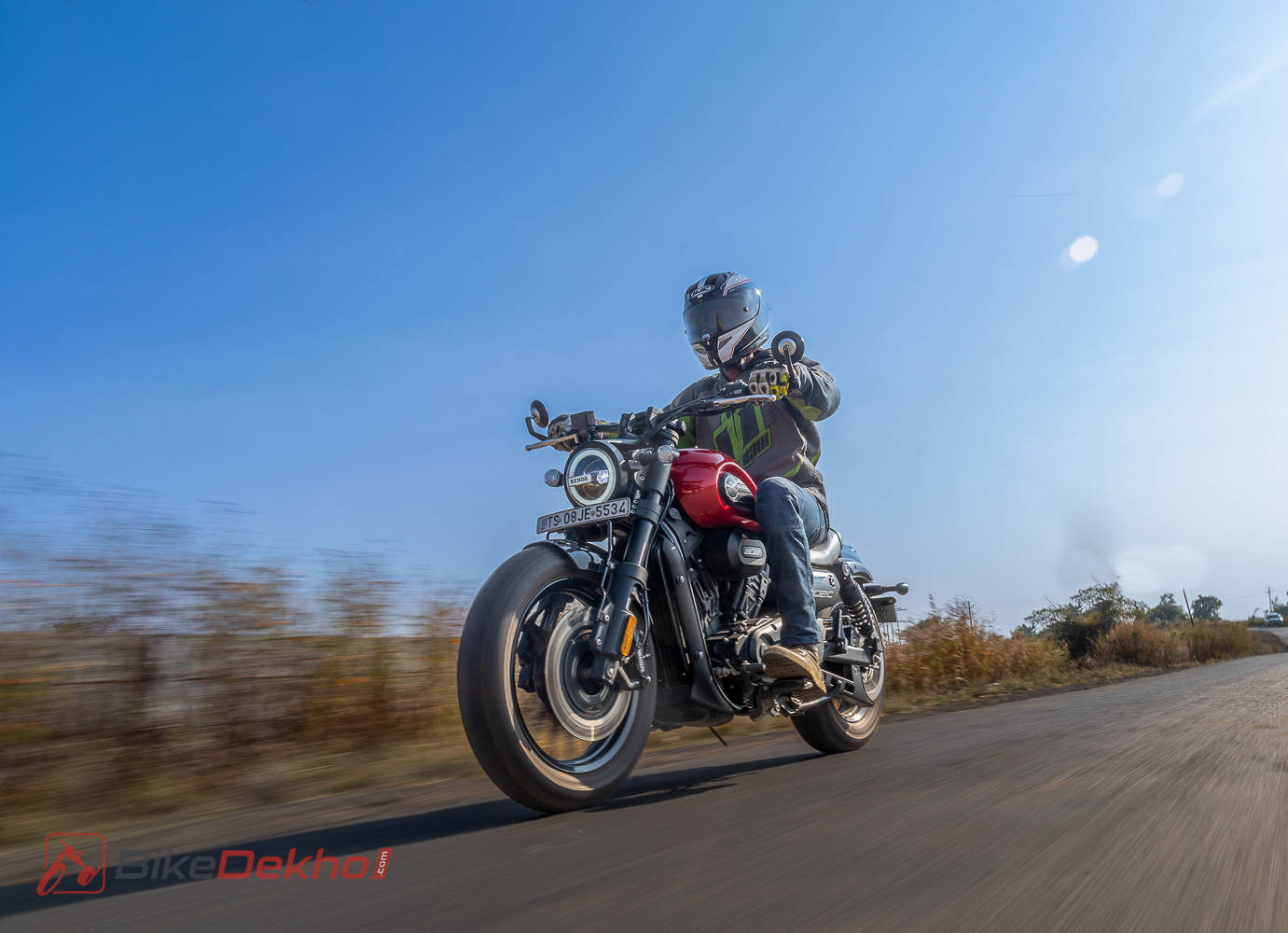Keeway V302C Cruiser Review: Likes And Dislikes
Modified On Nov 27, 2022 10:17 AM By Praveen M.for Keeway V302C
- 1094 Views
Keeway’s flagship bike gives a Chinese twist to the American V-twin cruising experience, making it even more accessible. We find out whether this is a winning formula

V-twin cruisers have always been aspirational to the masses. But quintessential cruisers, like the ones Harley-Davidson makes, are far from the reach of most enthusiasts in India, especially after the demise of the Harley-Davidson Street 750.
Keeway has made this genre more accessible with the introduction of two cruisers, of which the Keeway V302C is the flagship model. This rebadged Benda looks unlike any other cruisers that we are used to when it comes to Chinese motorcycles. We swung our leg over this machine, and here’s what we liked about it and what we didn’t:
Things We Liked:
Looks:

The Keeway V302C doesn’t try too hard to imitate Indian and Harley motorcycles. It’s got its own design flair with a hint of some sporty, bobber genes. This, coupled with the modern liquid-cooled V-twin powertrain and a large belt drive go hand in glove to complete the brawny cruiser aesthetic. Of course, you also get chopped fenders, fat inverted fork and tyres, meaty and blacked two-to-one exhaust, along with laidback bits like the forward set foot pegs and a wide drag-style handlebar.
More importantly, the fit and finish is surprisingly good for a Chinese-origin cruiser. The chunky switchgear is tactile, the side panels and the fuel tank feel solid and well put-together. One small grouse would be the inconsistent panel gaps in the switchgear, but that’s not really a deal-breaker. Overall, it looks like a big, muscular cruiser and will grab attention, especially with the brutish exhaust note.
Torquey Performance:

On paper, the 29.9PS, 26.5Nm 298cc V-twin seems rather peaky, with the peak power and torque coming in at 8500rpm and 6500rpm, respectively. However, the nature of this motor in the real world is in fact a mix of sports and cruiser-like.
For example, the torque wave kicks in as early as 3000rpm, and the surprisingly tractable six-speed gearbox transfers power to the rear wheel via a final belt drive with swiftness and ease. You can pull right from 33kmph on the sixth and the motor even lets you move from standstill / take u-turns in the third.

As for mile-munching, the motorcycle feels refined cruising at 80kmph with the tacho hovering at around 4500rpm. But twist the throttle and the bike surges past 120kmph at around 6900rpm and it still has a little more grunt to go beyond, although that would be pushing the engine a tad much.
All said and done, you can cruise at triple-digit speeds without much fuss on this bike. Its light 167kg (kerb) heft is also one of the reasons for its sprightly nature. Oh, and being light and torquey also puts less stress to the motor, so consequently, we got a very respectable 29.06kmpl on the highway and 37.03kmpl in the city in our real-world mileage test.
Things We Disliked:
Stiff Ride Quality

While the front fork absorbs bumps without fuss, the lack of adequate travel in the rear suspension means the shock from sharp bumps is transferred directly to the rider. The rear suspension also tends to rebound rapidly over bumps and this tends to throw the rider off a bit.
Awkward riding posture, not so feature-laden console:

Shorter riders (a 5’5” tall person like me) will have to lean slightly forward to reach the wide handlebar. While it offers excellent leverage and has extremely good vibration damping, the handlebar being coupled with the forward-set footpegs means you’re not very comfortable like you normally would be on a cruiser.

Another pain point (quite literally) is the seat. The cushioning isn’t adequate, the pillion seat isn’t even roomy nor comfortable enough for your average chai tapri run. To make matters worse, the awkward ergonomics put all your body weight on the sloping end of the rider’s contoured seat.
Moreover, with a laid-back footpeg position, you’d expect a more convenient heel-toe shift lever, which isn’t present. Also, the instrument cluster is tucked in below the handlebar clamp forcing you to look away from the road if you have to take a glance to know how fast you’re going. Oh, and it doesn’t come with smartphone connectivity or even the more basic distance-to-empty readout either.
Vibey at higher speeds:

While the V-twin heart is refined at lower speeds, vibrations creep up on the footpegs beyond 6000rpm. But more worryingly, harsh vibrations can be felt on the seat as early as 4000rpm, leaving you feeling buzzy all over even after just a couple-of-hours-long ride.
Verdict:
As a Chinese company, Benda, erm… Keeway has done a fantastic job of making the American V-twin cruiser experience more accessible with the V302C. It looks smashing, can hustle to triple-digit speeds with ease, is engaging to ride and makes you feel like the Lord of the Streets (Sorry Yamaha).

But with a price of Rs 3.89 lakh for the base grey variant, it’s way too expensive for what it offers. The red colour variant that we got costs an astronomical Rs 4.09 lakh (both ex-showroom India)! It doesn’t even make sense considering the only difference is the colour of the tank.
Another aspect to consider is Keeway, as a brand barely has a presence in India, which would imply that the after-sales and service wouldn't be the easiest to get. We're also yet to see the motor’s longevity or the quality, being such an unheard of brand that is. It also may not be as popular as Royal Enfield, and at the end of the day, it is still a sub-500cc motorcycle, a segment the Chennai-based bikemaker rules single-handedly. That said, if you’re looking for a unique, sporty cruiser that has the brawns and is a beaut, the V302C is a compelling option.
